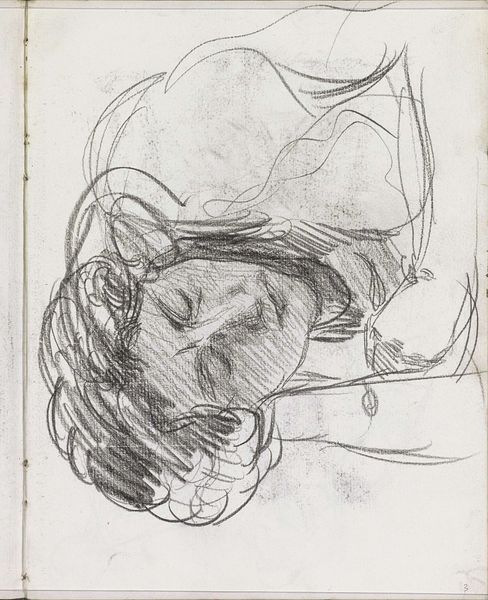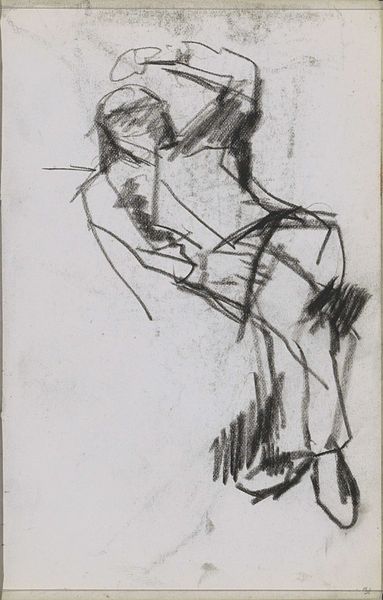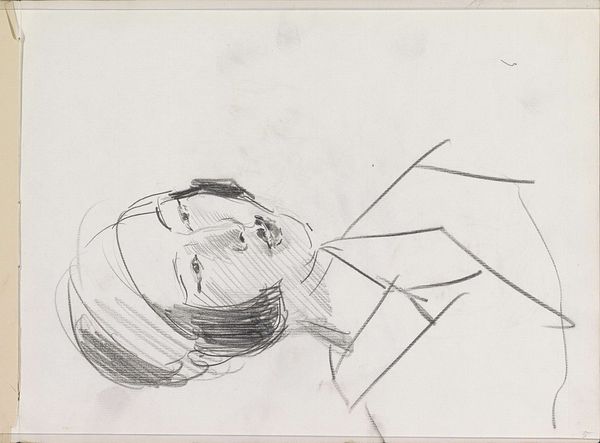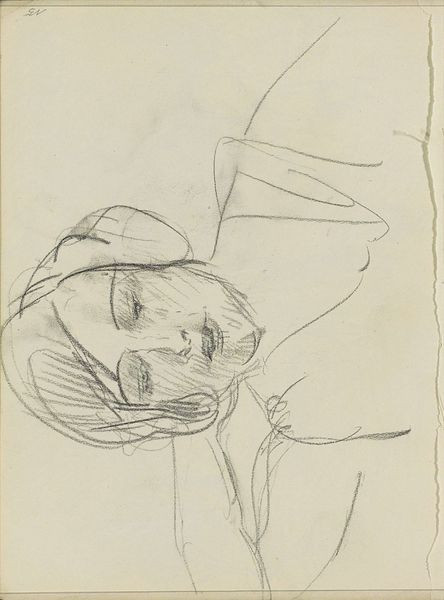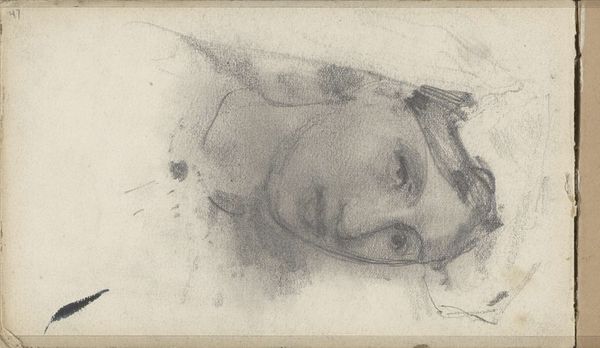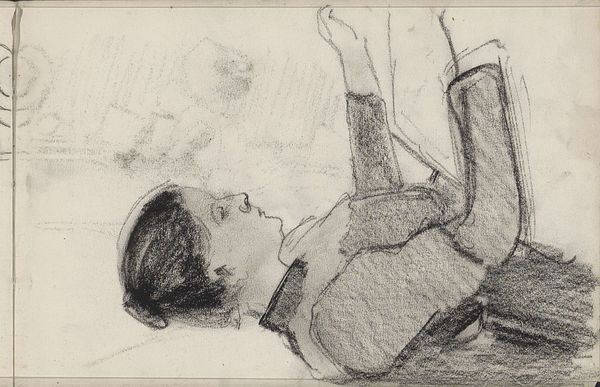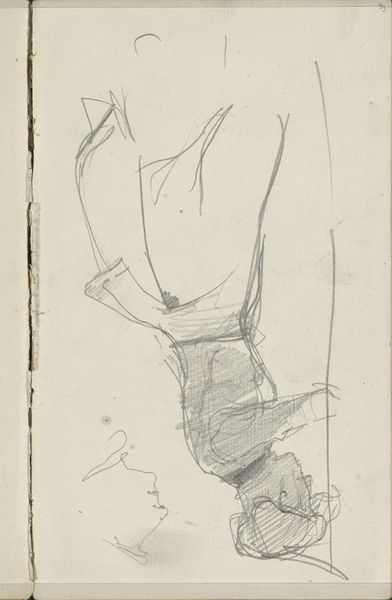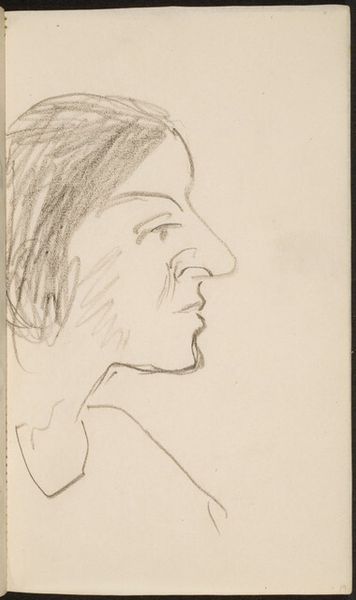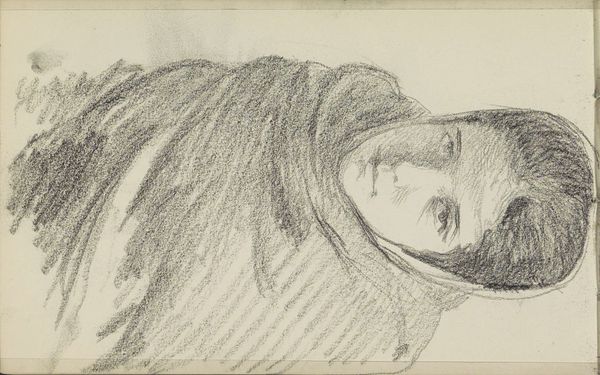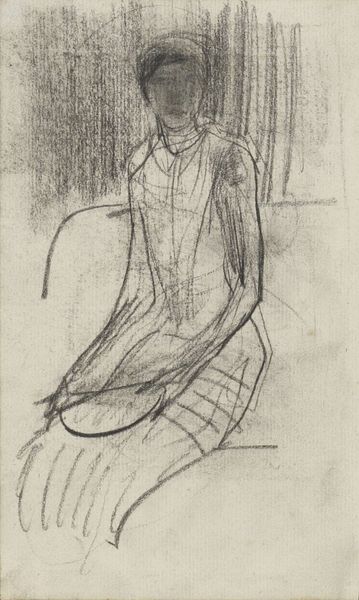![Frau mit aufgestütztem Kopf (Woman with Head Rested on Hand) [p. 73] by Max Beckmann](/_next/image?url=https%3A%2F%2Fd2w8kbdekdi1gv.cloudfront.net%2FeyJidWNrZXQiOiAiYXJ0ZXJhLWltYWdlcy1idWNrZXQiLCAia2V5IjogImFydHdvcmtzLzU3MWY1ODc4LWFiMTctNDcxNC1iMzM2LTUzYWZkMDAzODIyNi81NzFmNTg3OC1hYjE3LTQ3MTQtYjMzNi01M2FmZDAwMzgyMjZfZnVsbC5qcGciLCAiZWRpdHMiOiB7InJlc2l6ZSI6IHsid2lkdGgiOiAxOTIwLCAiaGVpZ2h0IjogMTkyMCwgImZpdCI6ICJpbnNpZGUifX19&w=828&q=75)
Frau mit aufgestütztem Kopf (Woman with Head Rested on Hand) [p. 73] 1929
0:00
0:00
drawing, graphite
#
portrait
#
drawing
#
german-expressionism
#
figuration
#
expressionism
#
graphite
#
portrait drawing
Dimensions: page size: 17 x 11.8 cm (6 11/16 x 4 5/8 in.)
Copyright: National Gallery of Art: CC0 1.0
Curator: Welcome to our gallery. Here, we see Max Beckmann's 1929 graphite drawing, "Frau mit aufgestütztem Kopf," or "Woman with Head Rested on Hand." It is a poignant portrait. Editor: There’s an immediate sense of intimacy here. The subject's downward gaze, the soft lines – it evokes a feeling of quiet contemplation, even melancholy. Curator: Indeed. Beckmann created this piece during the Weimar Republic, a period of immense social and political upheaval in Germany. Such portraits offered glimpses into the private lives of individuals navigating a world of rapid change. The “New Objectivity” movement, and even some Expressionist echoes, can be identified in its psychological rawness and unidealized presentation. Editor: It’s the simplicity of the medium – graphite on paper – that amplifies that rawness for me. Beckmann’s line is so economic; a few strokes define the slope of a shoulder or the curve of an eye. The light seems caught more in the negative spaces, accentuating the somber mood. Curator: Beckmann lived through two world wars. The social fabric was under intense strain. This drawing and others like it are visual documents of how people grappled with everyday struggles amid looming global uncertainty. Note the relative vulnerability of the subject’s bare shoulder. Editor: But the closed eyes, and supported head also project self-possession, a protection against those same struggles you mention. Compositionally, there is almost a sculptural feel. The stark lighting makes it all so…uncomfortably human. Curator: Portraits were tools. Commissioned works represented affluence, while drawings, such as this, were exercises. Beckmann could analyze the sitters with a focus on interior states or emotions, rendered for their symbolic weight rather than as strict likeness. Editor: A testament to his skill! It's fascinating how much emotional information Beckmann conveys using so few means, achieving clarity and a feeling of closeness at the same time. Curator: Precisely, understanding such historical context enriches our reading of these formal choices and illuminates his broader oeuvre. Editor: Yes, and this work in itself highlights the enduring power of simple materials to achieve profoundly affecting images. Thank you.
Comments
No comments
Be the first to comment and join the conversation on the ultimate creative platform.
